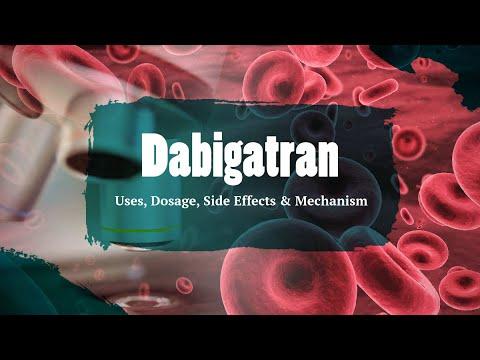In this article, the topic of discussion is the application of dabigatran in general practice. The article investigates the evidence and practical considerations that surround the application of dabigatran. For the purpose of preventing strokes and systemic embolisms, patients who have been diagnosed with non-valvular atrial fibrillation are eligible to receive dabigatran and its associated medication. It is not recommended for use in valvular atrial fibrillation or mechanical valves due to the shortage of evidence supporting its use in these conditions. Patients who have a creatinine clearance that is higher than 30 milliliters per minute are advised to take 150 milligrams twice daily as the recommended dosage. Patients who are at least 80 years old are advised to take a dose of 110 milligrams twice daily. This is the recommended dosage. Given that the pharmacokinetics of dabigatran are predictable, it is not necessary to perform routine monitoring of this medication. This is in contrast to the situation with warfarin. On the other hand, in order to maintain the medication's efficacy, it is necessary to administer treatment twice daily. The adverse effect that occurs most frequently is bleeding, and there are not many antidotes that can be administered. On the other hand, the risk of bleeding in the gastrointestinal tract is higher, whereas the risk of bleeding in the brain is lower.
Because dabigatran is just as effective as warfarin, there is no compelling reason to switch patients who are already well-controlled on warfarin away from the drug
- Dabigatran is just as effective as warfarin
- Warfarin may still be preferred by some patients due to the fact that it is well-known and has the ability to stop bleeding
- However, only in situations where the International Normalized Ratio (INR) is lower than 2
- When switching from dabigatran to warfarin, it is recommended that a washout period of two to three days be taken before discontinuing the use of dabigatran etexilate mesylate
- This recommendation is based on the clearance of creatinine
- The International Normalized Ratio (INR) is not a suitable method for monitoring dabigatran because the effects of the drug are extremely variable and difficult to predict
- In spite of the fact that the RE-LY trial provides support for dabigatran, there are some limitations
- Dabigatran, administered at a dosage of 100 milligrams twice daily, was found to be superior to warfarin in terms of reducing the risk of stroke and systemic embolism, according to the findings of the RE-LY study
- There are, however, some concerns that have been raised regarding the open-label design of the warfarin, the high withdrawal rates, and the inclusion of patients who were taking antiplatelet medication
A greater quantity of post-marketing data is required in order to arrive at a more precise definition of the advantages and disadvantages of the drug in comparison to warfarin. Although there is a possibility that supportive care and holding dabigatran will be sufficient for mild bleeding, this is not guaranteed. It is possible that intravenous fluid resuscitation, activated charcoal, hemodialysis, anti-fibrinolytics, and blood products will be required to be administered, depending on the clinical situation. To summarize, dabigatran etexilate mesylate is an intriguing new option that can be utilized for the prevention of stroke in patients who are diagnosed with atrial fibrillation. Utilization, on the other hand, calls for the meticulous selection of patients, and it is necessary to collect additional data from the real world. Despite the fact that dabigatran is being administered, it is still necessary to perform continuous monitoring and evaluation of the patient.

